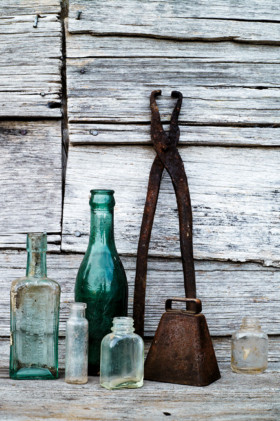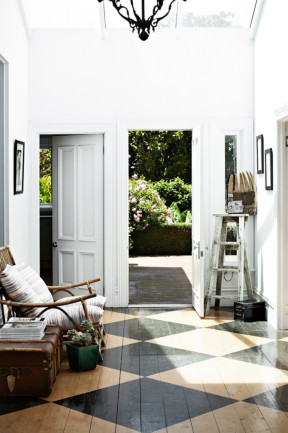By Jodie Carter
If you haven’t heard of Wabi Sabi before, in simple terms it is translated from Japanese into ‘a beauty of things imperfect, impermanent and incomplete… a beauty of things modest and humble… a beauty of things unconventional”. Originally, the words Wabi Sabi were not used together as they do have quite different meanings. Wabi has come to mean simple, unmaterialistic, humble and in tune with nature. Whereas Sabi means ‘The bloom of time’ such as that beautiful patina of weathered grey wood or aged copper. Nowadays people just use them as one and the term is quite well known around the world.
I truly believe this is a valid concept for our times. As we become more aware of the environment and sustainability of our planet, then Wabi Sabi becomes even more important. Not only is it better for our planet to embrace some of our existing pieces but it is quite on trend in interiors today. You will find well known designers and stylists such as Sibella Court successfully using aged items in their designs to great effect.
Wabi Sabi is not actually a design style as such – but rather a mindset of a commitment to using and embracing the less than perfect. Living modestly and learning to be happy with what you have.
Image from homelife.com.au: Wentworth Falls Cottage – photography by Sharyn Cairns
Therefore it doesn’t really matter if you’re looking to create an industrial feel, a loft style apartment or a Hamptons retreat, the Wabi Sabi mindset is an additional tool that is not only good for the environment, its good for your soul and your back pocket.
Dig out your grandma’s tea set, use the basket with the frayed handle, display that beautiful bowl with the chip and hang an old frame you found in the garage. My favourite decorating tool is old hardcover books. Nothing beats the frayed edge and the lovely muted colours and beautiful old typeset.
Even a very modern minimalist design can embrace Wabi Sabi. Cracked un-rendered concrete walls look great with a vintage leather chair and a super sleek modern sofa. The mix of softened aged patinas against sleek modern minimalist décor works really well.
Image from homelife.com.au: Tasmanian Country Home – photography by Sharyn CairnsIt is very important not to use Wabi Sabi as an excuse for a messy or dirty environment though. It does not go so far as to encompass an unmade bed, dirty surfaces, or just plain laziness. It shows the love and care you put into your home. It is never slovenly or messy. Cleanliness implies respect and that is very important for a Wabi Sabi aesthetic.
I hope these inspirational images give you ideas for your own home. You don’t have to spend any money on it, go through your cupboards, raid your grandparents’ and start thinking about ways to bring some Wabi Sabi into your life. It’s good for the soul and good for the environment. Love what you have right now!
Image from Homelife.com.au: Vintage Country House – photography by Michael Wee
Jodie Carter is a Sydney interior designer, specialising in residential projects, based in the Sutherland Shire.
Jen is currently on honeymoon in Tokyo, Venice and the UK, and has opened up the blog to a series of fabulous guest posters to share their interiors-related expertise in her absence. She hopes you’ll enjoy them and look out for the odd honeymoon post from overseas! The new Mrs Francis (who will still be known as Bishop for work purposes) will be back at her desk on 11 November.














Comments
Hi Jen, thanks so much for allowing me to write an article for your fabulous blog!! I trust you are having a fabulous honeymoon and we are all looking forward to your return. In the meantime though, I have enjoyed reading everyone else’s guest blogs too – so many great topics covered!!
Love your work Jen!
Best wishes
Jodie
Well done on your article Jodie very interesting a great read. I’m sure many will be pulling out there old wares to experiment with bits and pieces to decorate and add creativity to there home.
Thanks Jodie for this great piece. I love to have things I’ve collected from around the world that mean something out – out of the cupboard – but sometimes struggle with how to place them well. It’s an ongoing but nice challenge 🙂 Thanks for encouraging me to try again!
that’s my office, Jen! X
I thought it might be and was waiting to see if you would notice 😉 x
This is a very good point, where you said: “It is very important not to use Wabi Sabi as an excuse for a messy or dirty environment though.”
So true! A lot of people think wabi sabi means an appreciation for things that are old and weathered, so that means it’s ok to let the cat scratch the sofa and to ignore those spills on the coffee table. The concept of wabi is simplicity, but it embodies cleanliness. The concept of sabi is graceful age, but it means that objects must be cleaned, polished, repaired and respected. A messy cluttered room with dust and stains is never wabi sabi.
Great points well made, Adam! Thanks for your comment. Jen